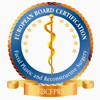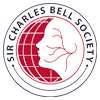Static Support Surgery encompasses fixed supportive surgical methods applied to support aesthetic and functional appearance, especially in cases of facial paralysis and similar conditions. This approach aims to provide a symmetrical and balanced appearance by stabilizing the position of the structures instead of reviving dynamic muscle movements. You can take a look at our content to get detailed information about this highly advantageous operation. Thus, you can have a comprehensive idea about the static sling procedure. We wish you all healthy days and good reading.
What is Static Support?
Plastic surgery and aesthetic methods can be used together to provide support to various parts and areas of the face. In this context, if you ask “what is static support?”, it is a set of applications that will make the face look natural and good while the face is at rest. With Static support surgery, the resting facial tissues can be suspended and in some people, it is possible to reposition the face to achieve harmony while the face is resting.
While facial positioning is provided with the procedures performed, the rejuvenation effect is also observed. For this reason, it is suitable for both providing symmetry and rejuvenating the face. With static facial suspension, the nasolabial fold, corner of the mouth, filtrum, base of the nose are revised and the best appearance is achieved even when the face is at rest.
How is a Static Sling Procedure Performed?
Since the way the surgery is performed may vary depending on the region of application, symmetry can be achieved in the mouth, nasolabial fold, filtrum and nasal base with the static support procedure. The duration of this procedure may take up to 3 hours as compared to the surgery performed under general anesthesia.
Static sling is used during surgery. The static sling is prepared with fissures taken from the outer thigh, hand, lower leg or temple. Fissure is used to support the mouth and nasolabial fold. It is positioned in the appropriate position by hanging from the temple like a hanger. When the face is at rest, the middle gülümsing position or resting position will be chosen to ensure symmetry.
The Benefits of Static Suspension
Although it varies according to the person, the benefits of static facial suspension are quite high. In this context, these benefits, which vary according to the symptoms experienced by the person, show their effect in a short time after surgery. These benefits are as follows;
- Helps to improve facial symmetry at rest.
- The face looks more harmonious and better at rest.
- It tidies sagging skin.
- Contributes to the rejuvenation of the face.
- Facial volume loss is corrected.
- It offers a solution for deep wrinkles.
- Erases traces of signs of aging.
- A more vivid and youthful appearance is achieved.
- Facial tissues are suspended and repositioned.
- Provides facial balance.
- The mouth contour, nasolabial fold, filtrum and base of the nose can be revised.
Your doctor will give you more details about these benefits after your examination.
How to Prepare for a Static Sling Procedure?
It is one of the outpatient surgical interventions where the person can return home on the same day. Before static support surgery, your doctor will perform a preliminary examination and set a suitable appointment date. Then, he/she informs you about what you should pay attention to before surgery and about recovery.
If you are working or studying, it is important to take time off and rest on the day of surgery. Recovery after the static sling procedure may take several weeks. Therefore, it is in your best interest to avoid strenuous exercise for the first 6 weeks and avoid pressure on the face. As you will spend the process on your feet, it is possible to see the positive effects of the surgery in a short time.
Do You Qualify for a Static Sling Procedure?
Although various techniques are used to treat facial paralysis, most of them are aimed at restoring symmetry when the face is in motion. When the face is at rest, facial resuscitation techniques lose their functionality. Therefore, static sling procedure is used. The doctor will decide on the suitability of this procedure.
The patient is consulted and information about the symptoms of facial paralysis is collected. According to the patient's general health status and medical history, the operation is discussed. One of the best techniques depending on the symptoms of facial paralysis is static facial suspension. Suitability for the operation will be evaluated according to the condition of the muscles and nerves.
What is The Role Of Static Support in Creating a Smile?
Since it is not a smile redesign and smile revitalization technique, static facial suspension provides symmetry on the resting face. While it offers effective results in elderly patients, it also has a facial rejuvenation role. It is used to make the face look better in the resting position and to ensure facial symmetry in this state, and in cases where one side of the face looks more saggy than the other, it causes a paralyzed appearance. This is eliminated by static facial suspension.
What to Expect During the Static Sling for Facial Paralysis Recovery Process
After the static sling surgery applied to the patient, some changes are observed on your face until complete recovery. This process is natural and seen as part of the healing process. After the static sling procedure;
- Drainage stops on the face for 24 hours after surgery. This drainage prevents fluid accumulation under the skin.
- Although swelling occurs in the cheeks, this swelling disappears completely after about 2 weeks. Therefore, applying cold compresses for the first 48 hours will reduce the swelling in a shorter time and relieve the patient.
- It is quite natural to feel pain or discomfort for a few days after the operation. You will feel much better over time.
- In the early postoperative period, you will be asked to return to your daily routine gradually. However, strenuous exercise should be avoided for 6 weeks.
- Depending on the situation, dissolvable stitches can be used or stitches that need to be removed can be preferred. These stitches are removed in about 1 week.
FAQ
Who is a good candidate for this surgery?
In facial paralysis lasting longer than 18 months or in cases where the symptoms are persistent, it is used to provide facial symmetry at rest. According to the doctor's assessment, it is applied in cases of facial asymmetry at rest, persistent symptoms or loss of function of the base of the nose. People with asymmetry problems in areas such as the corner of the mouth and the curve of the mouth are suitable candidates for this surgery.
What are the risks of the surgery?
Being a surgical intervention may also bring the risks of static sling surgery. At this point, if your doctor is the best in his field and has a high success rate in surgery, these risks do not occur. You can reduce the risk percentage by working with the best static sling surgery doctor. These risks are infections that may occur in the postoperative procedure area, causing facial asymmetry with incorrect procedures while trying to achieve facial symmetry, complications due to anesthesia, scars and possible bleeding risks.
Is there a procedure to improve midface symmetry at rest?
One of the approaches to provide mid-facial symmetry when the face is at rest is the addition of fascial support grafts. The extension of the muscle is connected to the appropriate places. The surgery is completed with nerve graft, nerve transfer and the use of functional muscle.














